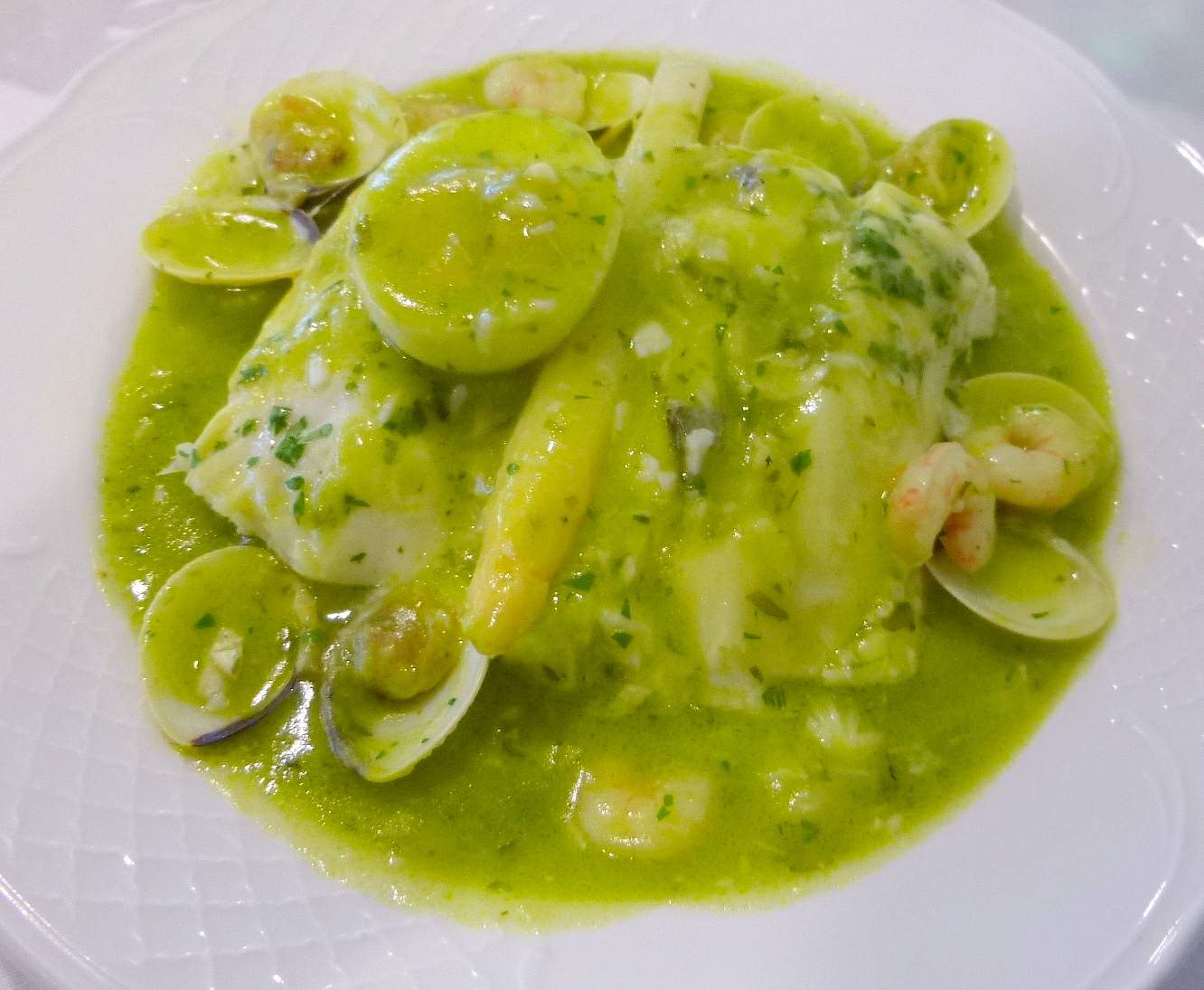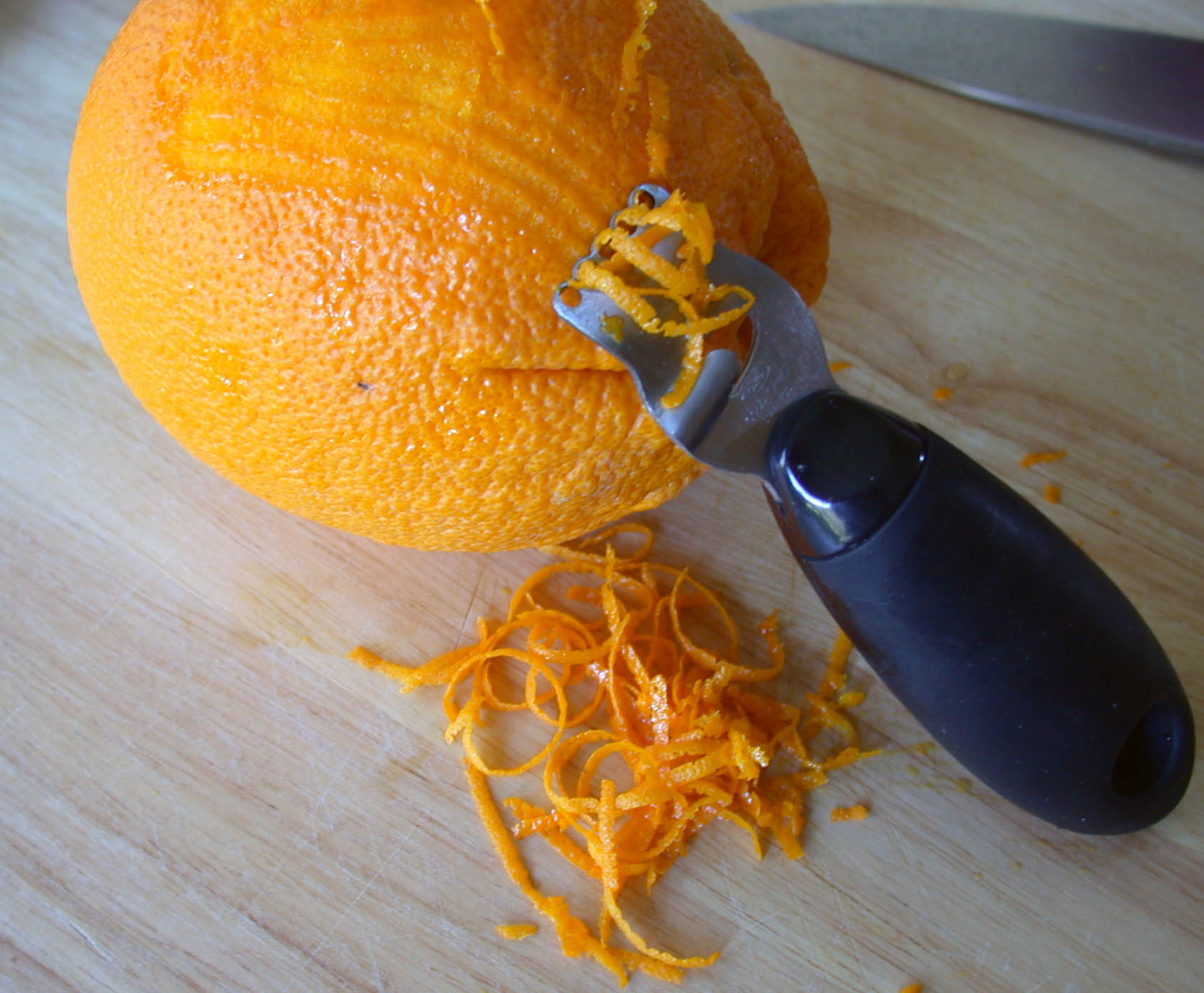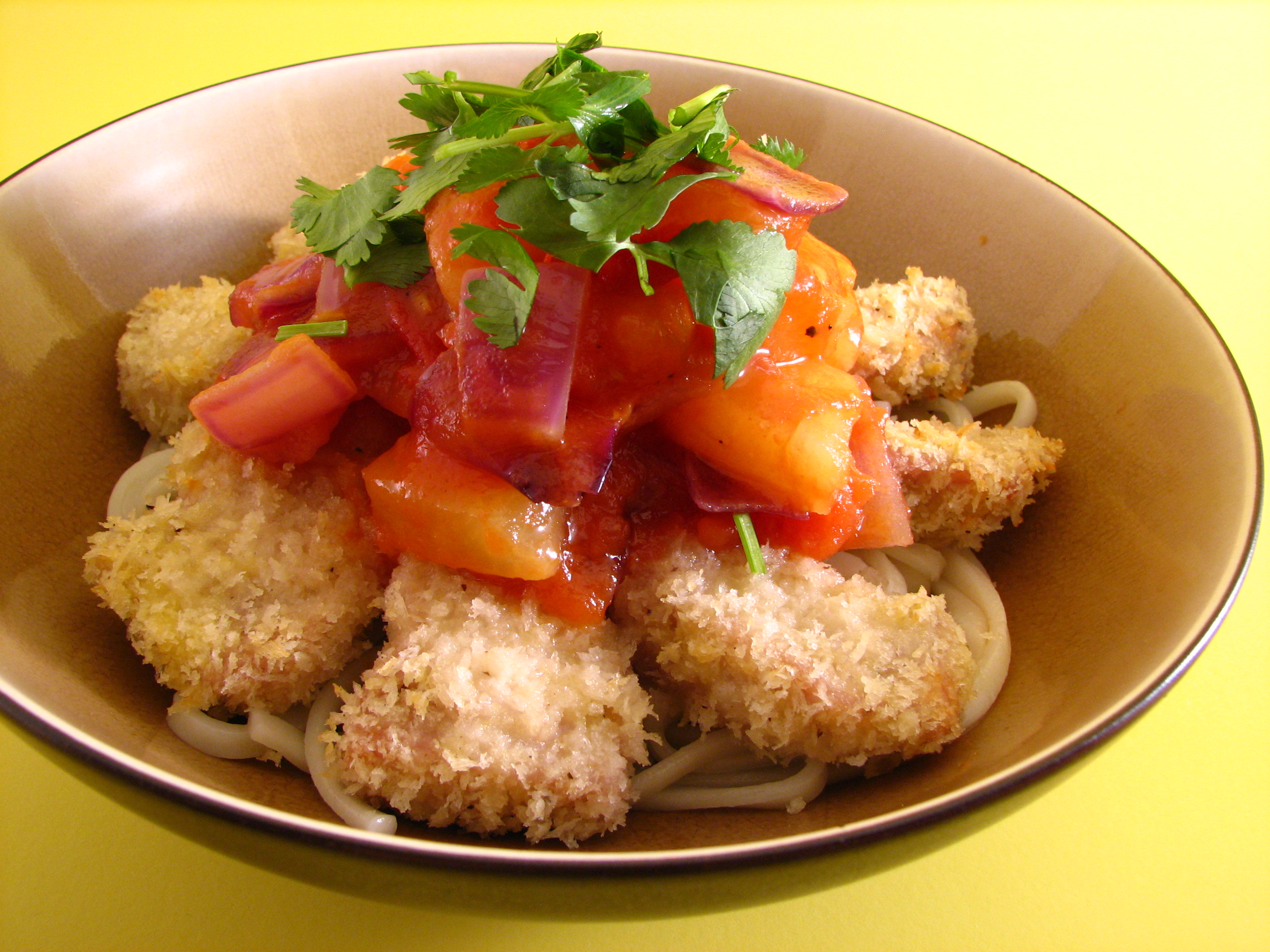|
Persillade
Persillade () is a sauce or seasoning mixture of parsley (french: persil) chopped together with seasonings including garlic, herbs, oil, and vinegar. In its simplest form, just parsley and garlic, it is a common ingredient in many dishes, part of a sauté cook's ''mise en place''. If added early in cooking, it becomes mellow, but when it is added at the end of cooking or as a garnish, it provides a garlicky jolt. It is extensively used in French and French-influenced cuisines, as well as in Cajun, Louisiana Creole, and Québécois cuisines. A classic French and Quebec bistro dish is ''pommes persillade'', cubed potatoes fried in a small amount of oil, with persillade added at the end of the cooking, and can sometimes be combined with Quebec ''poutine ''to produce a hybrid dish called ''poutine persillade''. Persillade is also popular in Louisiana; New Orleans chef Austin Leslie's signature dish was fried chicken with persillade. Variations There are many variations, either ... [...More Info...] [...Related Items...] OR: [Wikipedia] [Google] [Baidu] |
Garlic
Garlic (''Allium sativum'') is a species of bulbous flowering plant in the genus ''Allium''. Its close relatives include the onion, shallot, leek, chive, Allium fistulosum, Welsh onion and Allium chinense, Chinese onion. It is native to South Asia, Central Asia and northeastern Iran and has long been used as a seasoning worldwide, with a history of several thousand years of human consumption and use. It was known to ancient Egyptians and has been used as both a food flavoring and a traditional medicine. China produces 76% of the world's supply of garlic. Etymology The word ''garlic'' derives from Old English, ''garlēac'', meaning ''gar'' (spear) and leek, as a 'spear-shaped leek'. Description ''Allium sativum'' is a perennial flowering plant growing from a bulb. It has a tall, erect flowering stem that grows up to . The leaf blade is flat, linear, solid, and approximately wide, with an acute apex. The plant may produce pink to purple flowers from July to September in the Nort ... [...More Info...] [...Related Items...] OR: [Wikipedia] [Google] [Baidu] |
Parsley
Parsley, or garden parsley (''Petroselinum crispum'') is a species of flowering plant in the family Apiaceae that is native to the central and eastern Mediterranean region (Sardinia, Lebanon, Israel, Cyprus, Turkey, southern Italy, Greece, Portugal, Spain, Malta, Morocco, Algeria, and Tunisia), but has been naturalized elsewhere in Europe, and is widely cultivated as a herb, and a vegetable. Parsley is widely used in European, Middle Eastern, and American cuisine. Curly leaf parsley is often used as a garnish. In central Europe, eastern Europe, and southern Europe, as well as in western Asia, many dishes are served with fresh green chopped parsley sprinkled on top. Flat leaf parsley is similar, but it is easier to cultivate, some say it has a stronger flavor. Root parsley is very common in central, eastern, and southern European cuisines, where it is used as a snack or a vegetable in many soups, stews, and casseroles. It is believed to have been originally grown in Sardinia ... [...More Info...] [...Related Items...] OR: [Wikipedia] [Google] [Baidu] |
Green Sauce
Green sauce or greensauce is a family of cold, uncooked sauces based on chopped herbs, including the Spanish and Italian ''salsa verde'', the French ''sauce verte'', the German ''Grüne Soße'' or ''Frankfurter Grie Soß'' (Frankfurt dialect), the British mint sauce and greensauce, and the Argentinian ''chimichurri''. The Mexican ''salsa verde'', though also called a "green sauce", is instead based on tomatillos and is commonly cooked; the New Mexico version uses a green chile base. History Green sauce has a long history in many parts of Europe. It was certainly present in the Middle Ages, and may date to the Classical period. Green sauce made with parsley and often sage was one of the most common sauces of medieval cookery. In a 14th-century recipe, green sauce served with a dish of cheese and whole egg yolks boiled in watered down wine with herbs and spices was recommended for "lords, for settling their temperament and whetting their appetite". The basic recipe is prob ... [...More Info...] [...Related Items...] OR: [Wikipedia] [Google] [Baidu] |
Gremolata
Gremolata () or gremolada (, ) is a green sauce made of chopped parsley, lemon zest, and garlic. It is the standard accompaniment to the Milanese braised veal shank dish ''ossobuco alla milanese''. Ingredients ''Gremolata'' usually includes grated lemon peel, although the zest from other citrus fruits (lime, orange, grapefruit, etc.) may be used. There are also other variations, such as leaving out the herbs (parsley, cilantro/coriander, mint, sage) or the feature (garlic, finely grated fresh horseradish, minced shallot), or adding another item (Pecorino Romano cheese, anchovy, toasted pine nuts, grated bottarga). See also * Chimichurri * Persillade, a sauce made from parsley and garlic * Pesto * Pistou Pistou ( Provençal: ''pisto'' (classical) or ''pistou'' (Mistralian), ), or pistou sauce, is a Provençal cold sauce made from cloves of garlic, fresh basil, and olive oil. It is somewhat similar to the Ligurian sauce pesto, although it lacks ... References Italian sa ... [...More Info...] [...Related Items...] OR: [Wikipedia] [Google] [Baidu] |
Olive Oil
Olive oil is a liquid fat obtained from olives (the fruit of ''Olea europaea''; family Oleaceae), a traditional tree crop of the Mediterranean Basin, produced by pressing whole olives and extracting the oil. It is commonly used in cooking: for frying foods or as a salad dressing. It can be found in some cosmetics, pharmaceuticals, soaps, and fuels for traditional oil lamps. It also has additional uses in some religions. The olive is one of three core food plants in Mediterranean cuisine; the other two are wheat and grapes. Olive trees have been grown around the Mediterranean since the 8th millennium BC. In 2019–2020, world production of olive oil was . Spain was the largest producer followed by Italy, Tunisia, Greece, Turkey and Morocco. San Marino has by far the largest per capita consumption of olive oil worldwide. The composition of olive oil varies with the cultivar, altitude, time of harvest, and extraction process. It consists mainly of oleic acid (up to 83%), with ... [...More Info...] [...Related Items...] OR: [Wikipedia] [Google] [Baidu] |
Provence
Provence (, , , , ; oc, Provença or ''Prouvènço'' , ) is a geographical region and historical province of southeastern France, which extends from the left bank of the lower Rhône to the west to the Italian border to the east; it is bordered by the Mediterranean Sea to the south. It largely corresponds with the modern administrative region of Provence-Alpes-Côte d'Azur and includes the departments of Var, Bouches-du-Rhône, Alpes-de-Haute-Provence, as well as parts of Alpes-Maritimes and Vaucluse.''Le Petit Robert, Dictionnaire Universel des Noms Propres'' (1988). The largest city of the region and its modern-day capital is Marseille. The Romans made the region the first Roman province beyond the Alps and called it ''Provincia Romana'', which evolved into the present name. Until 1481 it was ruled by the Counts of Provence from their capital in Aix-en-Provence, then became a province of the Kings of France. While it has been part of France for more than 500 years, it ... [...More Info...] [...Related Items...] OR: [Wikipedia] [Google] [Baidu] |
Anchovy
An anchovy is a small, common forage fish of the family Engraulidae. Most species are found in marine waters, but several will enter brackish water, and some in South America are restricted to fresh water. More than 140 species are placed in 17 genera; they are found in the Atlantic, Indian and Pacific Oceans, and in the Black Sea and the Mediterranean Sea. Anchovies are usually classified as oily fish. Genera Characteristics Anchovies are small, green fish with blue reflections due to a silver-colored longitudinal stripe that runs from the base of the caudal (tail) fin. They range from in adult length, and their body shapes are variable with more slender fish in northern populations. The snout is blunt with tiny, sharp teeth in both jaws. The snout contains a unique rostral organ, believed to be electro-sensory in nature, although its exact function is unknown. The mouth is larger than that of herrings and silversides, two fish which anchovies closely resemble in ... [...More Info...] [...Related Items...] OR: [Wikipedia] [Google] [Baidu] |
Gremolata
Gremolata () or gremolada (, ) is a green sauce made of chopped parsley, lemon zest, and garlic. It is the standard accompaniment to the Milanese braised veal shank dish ''ossobuco alla milanese''. Ingredients ''Gremolata'' usually includes grated lemon peel, although the zest from other citrus fruits (lime, orange, grapefruit, etc.) may be used. There are also other variations, such as leaving out the herbs (parsley, cilantro/coriander, mint, sage) or the feature (garlic, finely grated fresh horseradish, minced shallot), or adding another item (Pecorino Romano cheese, anchovy, toasted pine nuts, grated bottarga). See also * Chimichurri * Persillade, a sauce made from parsley and garlic * Pesto * Pistou Pistou ( Provençal: ''pisto'' (classical) or ''pistou'' (Mistralian), ), or pistou sauce, is a Provençal cold sauce made from cloves of garlic, fresh basil, and olive oil. It is somewhat similar to the Ligurian sauce pesto, although it lacks ... References Italian sa ... [...More Info...] [...Related Items...] OR: [Wikipedia] [Google] [Baidu] |
Zest (ingredient)
Zest is a food ingredient that is prepared by scraping or cutting from the rind of unwaxed citrus fruits such as lemon, orange, citron, and lime. Zest is used to add flavor to foods. In terms of fruit anatomy, the zest is obtained from the flavedo (exocarp) which is also referred to as zest. The flavedo and white pith (albedo) of a citrus fruit together makes up its peel. The amounts of both flavedo and pith are variable among citrus fruits, and may be adjusted by the manner in which they are prepared. Citrus peel may be used fresh, dried, candied, or pickled in salt. Preparation For culinary use, a zester, grater, vegetable peeler, paring knife, or even a surform tool is used to scrape or cut zest from the fruit. Alternatively, the peel is sliced, then excess pith (if any) cut away. The white portion of the peel under the zest (pith, albedo or mesocarp) may be unpleasantly bitter and is generally avoided by limiting the peeling depth. Some citrus fruits have so littl ... [...More Info...] [...Related Items...] OR: [Wikipedia] [Google] [Baidu] |
Lemon
The lemon (''Citrus limon'') is a species of small evergreen trees in the flowering plant family Rutaceae, native to Asia, primarily Northeast India (Assam), Northern Myanmar or China. The tree's ellipsoidal yellow fruit is used for culinary and non-culinary purposes throughout the world, primarily for its juice, which has both culinary and cleaning uses. The pulp and rind are also used in cooking and baking. The juice of the lemon is about 5% to 6% citric acid, with a pH of around 2.2, giving it a sour taste. The distinctive sour taste of lemon juice makes it a key ingredient in drinks and foods such as lemonade and lemon meringue pie. History The origin of the lemon is unknown, though lemons are thought to have first grown in Assam (a region in northeast India), northern Myanmar or China. A genomic study of the lemon indicated it was a hybrid between bitter orange (sour orange) and citron. Lemons are supposed to have entered Europe near southern Italy no later tha ... [...More Info...] [...Related Items...] OR: [Wikipedia] [Google] [Baidu] |
Bread Crumbs
Bread crumbs or breadcrumbs (regional variants including breading and crispies) consist of crumbled bread of various dryness, sometimes with seasonings added, used for breading or crumbing foods, topping casseroles, stuffing poultry, thickening stews, adding inexpensive bulk to soups, meatloaves and similar foods, and making a crisp and crunchy covering for fried foods, especially breaded cutlets like tonkatsu and schnitzel. The Japanese variety of bread crumbs is called ''panko''. Types Dry Dry breadcrumbs are made from dry breads which have been baked or toasted to remove most remaining moisture, and may have a sandy or even powdery texture. Bread crumbs are most easily produced by pulverizing slices of bread in a food processor, using a steel blade to make coarse crumbs, or a grating blade to make fine crumbs. A grater or similar tool will also do. Fresh The breads used to make soft or fresh bread crumbs are not quite as dry, so the crumbs are larger and produce a soft ... [...More Info...] [...Related Items...] OR: [Wikipedia] [Google] [Baidu] |
Bay Leaf
The bay leaf is an aromatic leaf commonly used in cooking. It can be used whole, either dried or fresh, in which case it is removed from the dish before consumption, or less commonly used in ground form. It may come from several species of tree, the bay laurel and the California bay tree being the most common. The flavor that a bay leaf imparts to a dish has not been universally agreed upon, but most agree it is a subtle addition. Sources Bay leaves come from several plants, such as: *Bay laurel (''Laurus nobilis'', Lauraceae). Fresh or dried bay leaves are used in cooking for their distinctive flavour and fragrance. The leaves should be removed from the cooked food before eating (see safety section below). The leaves are often used to flavour soups, stews, braises and pâtés in many countries. The fresh leaves are very mild and do not develop their full flavour until several weeks after picking and drying. *California bay leaf. The leaf of the California bay tree (''Umbel ... [...More Info...] [...Related Items...] OR: [Wikipedia] [Google] [Baidu] |









